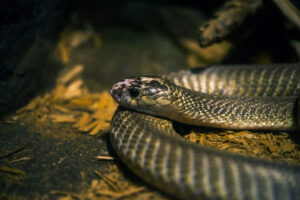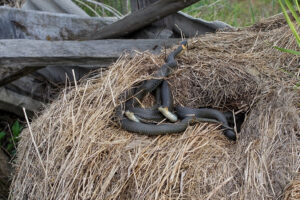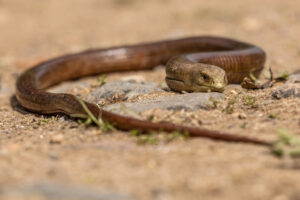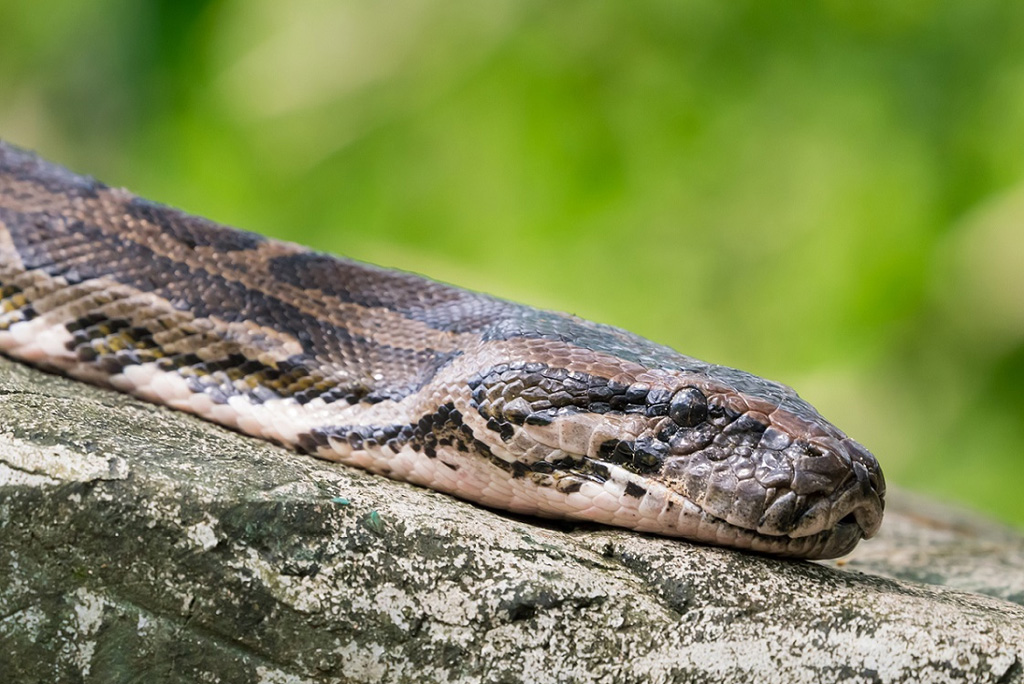Snakes, with their slithering grace and enigmatic presence, have long been a source of curiosity and often, anxiety for humans. As winter sets in, questions about how these reptiles behave during the cold season naturally arise.
In this article, we will dig deep into the topic of snakes in winter, addressing common concerns and shedding light on their winter habits. So keep reading if you’re interested to learn more!
Do Snakes Freeze And Die, Or Will They Survive The Winter?
Let’s start with a common misconception – snakes do not freeze and die during the winter. These fascinating creatures are more resilient than you might think. Not only do they simply not succumb to the cold, but they have various strategies to survive at low temperatures.
Just like all reptiles, snakes are ectothermic, which means that their body temperature is regulated by the surrounding environment.
Snakes are surprisingly resilient in the face of cold weather, and many species can withstand temperatures well below freezing.
So, what temperature is too cold for snakes to be out? The specific temperature at which a snake becomes inactive and seeks shelter varies among species. However, generally speaking, when the temperature drops below 50°F, snakes become less active. But that doesn’t mean that they simply freeze.

When And How Are Snakes Preparing For Winter?
Snakes are well aware of the changing seasons, and they start preparing for winter long before the first snowfall. Snakes get ready for winter by slowing down their metabolic processes. As the days get shorter and temperatures drop, they reduce their food intake and start searching for suitable shelters for the winter.
One interesting aspect of snake behavior in the lead-up to winter is the phenomenon of basking. Snakes bask in the sun to gather warmth during the fall months. They will often be seen basking in the sun, absorbing heat to last them through the cold days ahead. This behavior is more prominent in the morning when the sun’s rays are warmer.
Do Snakes Hibernate In The Winter?
Snakes are not like mammals that go into a deep, prolonged sleep during the winter. Instead, they enter a state known as brumation. Brumation is a fascinating adaptation that allows snakes to conserve energy during the winter months.
Brumation is similar to hibernation in mammals but with some key differences.
Unlike mammals, which maintain a relatively stable body temperature during hibernation, snakes’ body temperature drops to nearly match that of their surroundings. This lowered metabolic rate means they can survive for months without eating.
During brumation, a snake’s heart rate and respiration slow down significantly. The snakes remain somewhat alert, but their activity is minimal. They become less responsive to external stimuli and may remain in the same location for weeks or even months. This is a vital survival strategy that helps them endure the harsh winter conditions.

Where Do Snakes Go During Winter?
Snakes seek out suitable overwintering sites before the cold weather arrives. Common winter shelters for snakes include:
Burrows – Many snakes, like garter snakes and rat snakes, seek refuge in burrows dug by other animals, such as rodents. They take over these abandoned tunnels and hunker down for the winter.
Rock crevices – Some snake species prefer rock crevices or fissures as winter hideouts. These spaces provide insulation and protection from harsh weather.
Tree hollows – Arboreal snakes, like tree-dwelling rat snakes, may find shelter in tree hollows or cavities. They curl up in these protected spaces and wait for spring.
Leaf litter – Certain smaller snake species, like the brown snake, may burrow into leaf litter or soil for winter. This provides them with some insulation against the cold.
Do Snakes Come Out In Winter?
While snakes generally hunker down and enter a state of brumation during winter, there are exceptions to this rule. These situations are rare but worth noting:
– Unseasonably warm days
Snakes are opportunistic creatures. If there’s a sudden warm spell during the winter, you might spot a snake briefly emerging from its shelter to bask in the sun. However, they will quickly return to their den when the temperature drops again.
– Water snakes
Some aquatic snake species, like the Northern Water Snake, remain active throughout the winter, provided they have access to unfrozen water. They can be seen swimming and foraging beneath the ice.
– Southern regions
In warmer southern regions, some snake species may remain active year-round. While their activity levels might decrease during cooler months, they don’t undergo the same level of winter dormancy as their northern counterparts.

Can Snakes Get In Your House In Winter?
Although snakes usually seek natural shelters during winter, they may occasionally find their way into homes. This is because snakes are opportunistic when it comes to seeking shelter.
You’re less likely to spot them in your home during the winter because snakes are generally seeking insulated, natural shelters. However, it’s not impossible. Particularly if there are cracks or openings in the foundation or walls of your home, they can sneak inside.
Therefore, to prevent snakes from entering your home during winter, consider these precautions:
– Seal openings
Inspect your home for any gaps or cracks and seal them properly. Pay close attention to areas around doors, windows, pipes, and vents.
– Keep your yard tidy
Remove debris, tall grass, and woodpiles near your home, as these can provide hiding spots for snakes.
– Check crawlspaces
If your home has a crawlspace, make sure it’s properly sealed and free of openings that could allow snakes to enter.
– Secure vent covers
Install secure vent covers on crawlspace and attic vents to prevent snakes from entering through these openings.
Understanding snake behavior in winter is essential for your safety. Snakes do not freeze and die during the cold season. Instead, they employ strategies like brumation to survive. Knowing where snakes go during winter and being aware of the rare exceptions to their winter behavior can help dispel myths and fears surrounding these creatures.
While snakes generally avoid human dwellings during winter, it’s important that you take preventive measures to ensure they don’t find their way into your home. A well-sealed home and a tidy yard can greatly reduce the chances of encountering snakes at home.
However, if you suspect snakes in or around your home during the winter months, or have concerns about a snake infestation, don’t hesitate to call a professional pest control company.
Our snake trappers have the knowledge and tools to safely manage snakes, which can ensure the safety of both humans and these remarkable reptiles. So, contact Peachtree Pest Control experts in Metro Atlanta, GA, for a thorough inspection and safe removal.
